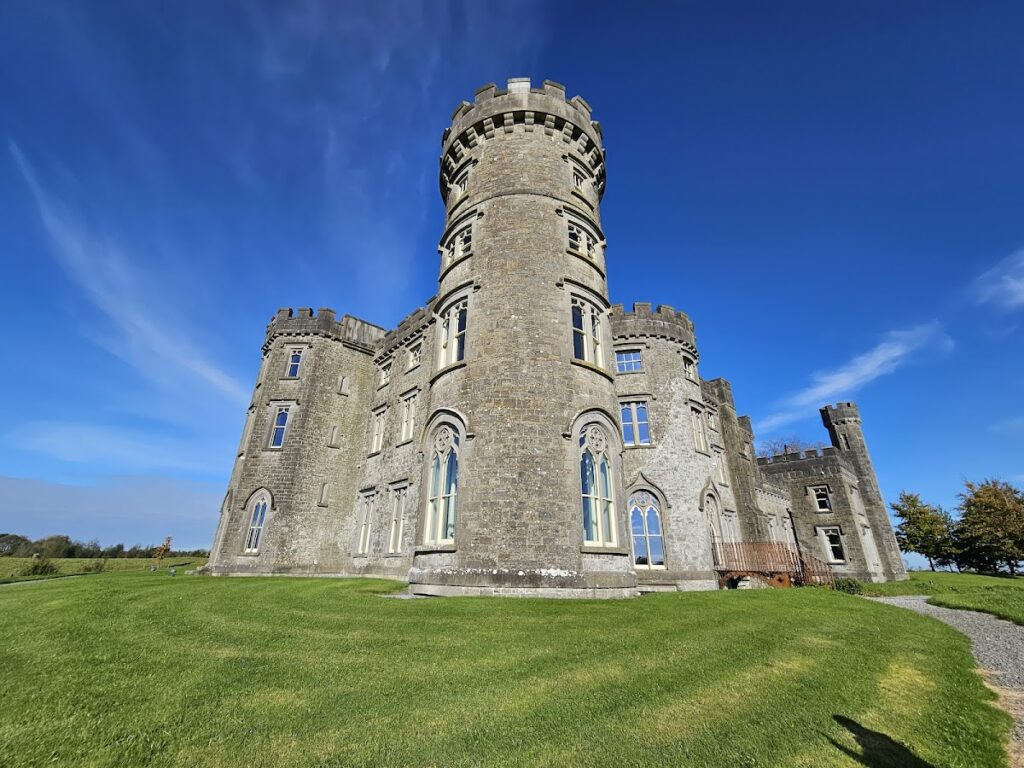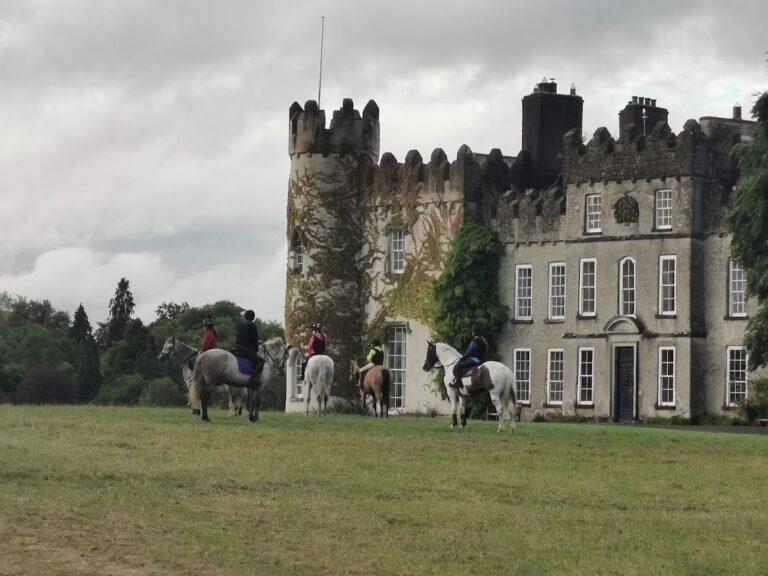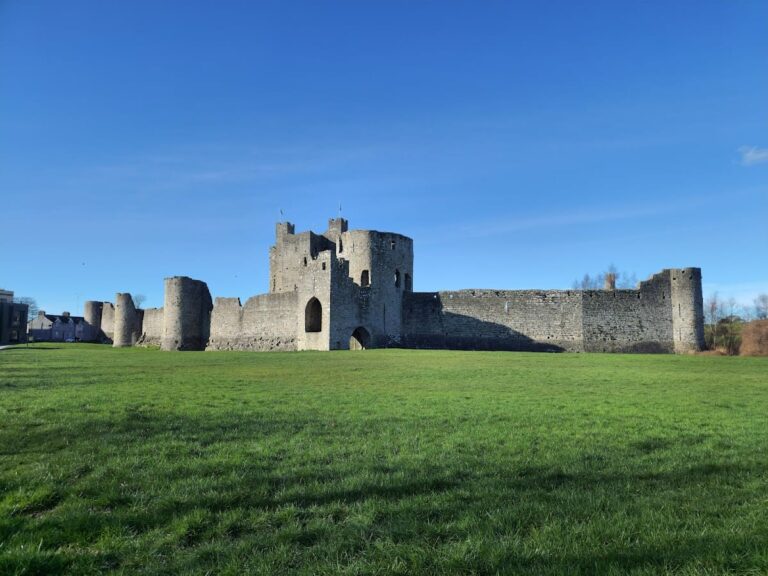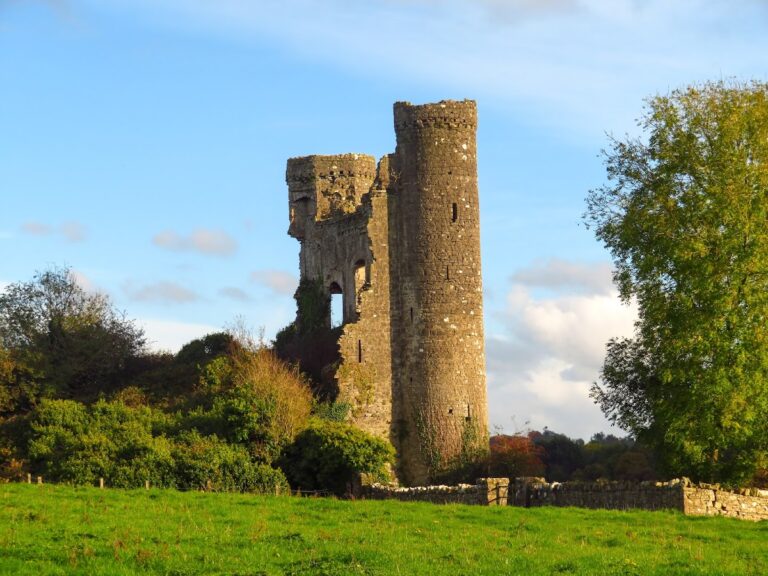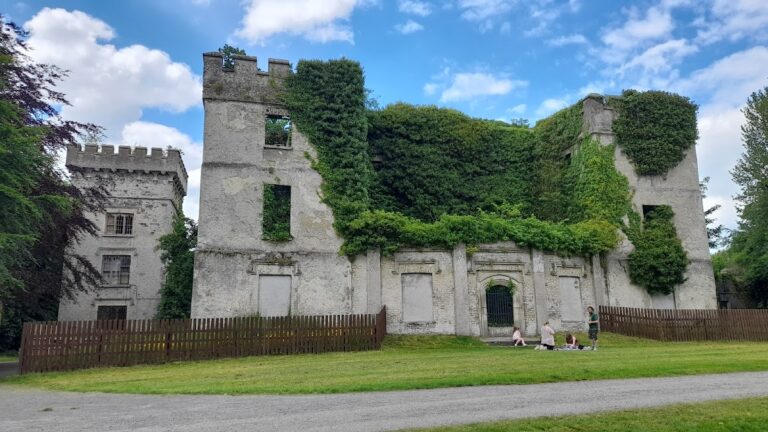Killua Castle: A Historic Estate in Ireland
Visitor Information
Google Rating: 4.7
Popularity: Low
Google Maps: View on Google Maps
Official Website: www.killuacastle.com
Country: Ireland
Civilization: Unclassified
Remains: Military
History
Killua Castle is situated in Killua, near Clonmellon, in Ireland. The estate originated in the 17th century after lands formerly held by the Knights Hospitallers of St John were seized and granted to Benjamin Chapman, who served as a captain in Oliver Cromwell’s military forces. This transfer reflects the political and religious upheavals in Ireland during the Cromwellian conquest.
Around 1780, the house seen today was constructed by Sir Benjamin Chapman, 1st Baronet, who inherited the estate from his father. This new residence replaced the earlier castle that once stood on the site, signaling a shift from medieval defensive architecture to a more refined country house suitable for gentry life. After Sir Benjamin’s death, ownership passed to his brother Thomas Chapman in 1810, who undertook significant expansions and enhancements in the following decade.
In the early 1820s, Thomas Chapman added several towers to the house, including a large round tower and smaller ones serving as a library and staircases. He also completed the battlements that gave the building a castellated appearance. Near the house, approximately 200 to 300 meters away, he erected the Raleigh Obelisk in 1810. This monument commemorates the reputed introduction of potatoes to Ireland by Sir Walter Raleigh, although the precise origins of potato cultivation in the country remain unclear. The obelisk’s inscription was altered at a later date to include a middle initial “G,” which is not historically verified and is likely a form of vandalism.
The Killua estate remained under Chapman family ownership until 1949, when the house and the final remaining 1,200 acres were sold. After this time, the castle gradually fell into disrepair and was enveloped by ivy until restoration efforts began in 2006, aimed at preserving its historic fabric.
Remains
The current Killua Castle was initially built in roughly 1780 as a country house surrounded by extensive farmland. Its design included a formal hall, dining area, and drawing rooms arranged to suit domestic life. Two staircases provided access to the upper floors, while ancillary buildings on the estate, such as stables and barns, supported agricultural activities including crop storage within a structure known as a haggard.
In the 1820s, architectural modifications introduced several towers which contributed to the castle’s distinctive appearance. These included a large round tower and smaller, functional towers such as a library tower and a staircase tower. A back door tower was also added, enhancing access and possibly defense. Around this period, battlements were completed along the roofline, giving the house a castellated form reminiscent of medieval fortifications but adapted for a residential building. These constructions were primarily executed in the same style and materials as the original house, blending 18th-century elegance with early 19th-century romanticism in architecture.
The Raleigh Obelisk stands near the castle grounds, constructed from stone and set approximately 200 to 300 meters away from the main building. It bears an inscription honoring Sir Walter Raleigh for planting some of the earliest potatoes in the area, a tradition that contributed to the agricultural history of Ireland. The obelisk was restored with the support of heritage organizations and remains a notable landmark connected to local lore. The additional middle initial “G” on the inscription is known to have been added later, and is not part of the original dedication.
Prior to the restoration work that commenced in 2006, Killua Castle was in a ruinous state. The structure lacked a roof and was heavily covered in ivy, which concealed much of its architectural details. Conservation efforts sought to stabilize what remained of the building’s fabric, preserving both the 18th-century country house and the 19th-century additions without altering their historic character.

